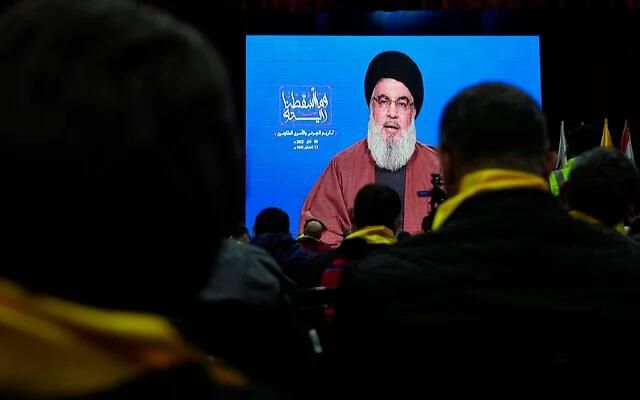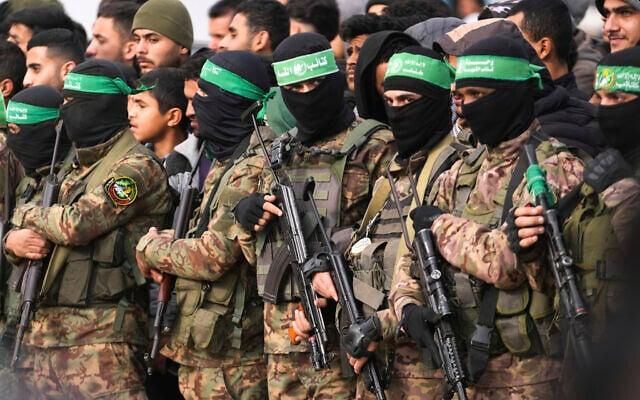By Eric Vandenbroeck and co-workers
A study, based on
classified documents, reveals the terror group’s shift from defense to a
multifront assault plan, culminating in the devastating October 7, 2023,
invasion, Gaza records show that Iran and Hezbollah plotted with Hamas to
destroy Israel.
In the years leading
up to its invasion of Israel on October 7, 2023, Hamas developed a concrete
plan to destroy the Jewish state, in full coordination with Hezbollah and Iran,
according to classified documents published by the Meir Amit
Intelligence and Terrorism Information Center.
The Hamas documents
reveal that in the lead-up to October 7, Iran was a critical player in funding
Hamas’s plan to destroy Israel, that the Gaza-based terror group pushed for a
coordinated attack from multiple fronts, and that its leader Yahya Sinwar believed
that his military force could push Israel toward collapse.
Hamas’s devastating
large-scale attack, which caught the nation off guard, involved coordinated
land, sea, and air assaults, marking a significant escalation in its
long-standing goal to destroy Israel. Despite years of military buildup in Gaza
and strategic shifts, Israeli intelligence had not anticipated the scale or
suddenness of the attack, leaving security forces badly unprepared.
Before 2019, Hamas’s
military operations were primarily framed in defensive terms, focusing on
strengthening its infrastructure in Gaza to withstand future conflicts, as
outlined in a Hamas document titled “The Movement’s Strategy 2013-2017.”
The document also discussed a “realistic plan” of “implementing popular
resistance in Palestine,” by initiating an intifada in the West Bank or
“mobilizing… forces… to carry out jihad,” as well as “pursuing Jews and
military personnel in international forums.”
However, a
significant shift in dialogue emerged in 2019, with a revolution in Hamas’s
thinking taking place in 2021, the internal documents recovered from Gaza
show. In 2019, the terror group began to emphasize coordination with
Iran’s Quds Force and Hezbollah under a “joint defense agreement,” according to
a document authored by the office of then-Hamas political bureau chief Sinwar.
It laid out plans for a multifront war against Israel, with the ultimate goal
of “liberating al-Quds [Jerusalem].” Three attack scenarios Operation
Guardian of the Walls in 2021 was the pivotal moment in Hamas’s strategic
evolution.
The operation was an
Israeli military campaign aimed at dismantling Hamas’s military infrastructure
in Gaza, following escalating violence and rocket attacks from the Strip.
The month after the operation, Sinwar, then-Hamas military leader Mohammed
Deif, and Deif’s deputy, Marwan Issa, sent a letter to Esmail Qaani, the
commander of the Quds Force of Iran’s Islamic Revolutionary Guard Guard Corps, requesting $500 million over two years to fund
its war effort: “We are confident that by the end of these two years or during
them if Allah wills, we will uproot [Israel], and together we will change the
face of the region.” Deif and Issa were killed in Gaza in separate IDF
airstrikes last year. Sinwar was killed by an IDF tank shell in Rafah last
October.
Underneath the head of Hamas’s military wing Muhammad
Deif

Documents reveal that
Hamas was fully committed to this proposal by 2022, with Sinwar presenting a
concrete plan for a multifront confrontation with Israel in a letter to
then-political leader Ismail Haniyeh, who was assassinated in Tehran last July,
describing three possible scenarios.
The first, described
by Hamas as the “preferred scenario,” detailed a large-scale military campaign
against Israel involving all “Axis of Resistance” actors, excluding Iran.
This scenario was
described as a “sudden confrontation from all fronts” with the timing “linked
to one of the Jewish holidays,” specifically referring to Passover. It also
mentioned “reasonable participation from Yemen, Iraq, and Syria” and “guerrilla
operations beyond the Jordanian borders,” alongside Hezbollah’s full force.
The second scenario —
or the “intermediate scenario”— designated Hamas as the central actor in the
attack. Hezbollah would only use “a quarter or a third of its power, keeping
the remaining forces for deterrence and the strategic campaign,” while other “axis
forces engage from the other fronts.”

The third and final
scenario, described as a “scenario of necessity,” placed the preponderance of
the fight on Hamas’s shoulders, with Hezbollah merely playing an indirect role
by allowing the “activation of [Hamas] forces with increasing efficiency from
Lebanon.”
The 2022 letter also
discussed the possible establishment of a Hamas combat unit in Lebanon, with a
minimum of 250 fighters, that could use Hezbollah’s operational networks to
conduct raids into Israeli territory.
In Haniyeh’s response
to Sinwar, he revealed that Iran and Hezbollah ultimately endorsed the first
scenario, envisioning a coordinated, multifront assault on Israel: “[The first
scenario] was approved in the discussion we held with our allies; we are awaiting
its final review in additional meetings, particularly with the Iranians, and we
will follow up on the necessary preparations for it as outlined above.”
In the months before October 7, Hamas leaders continued to discuss an
attack. In April 2023, Sinwar told Hamas political bureau member Muhammad
Nasser that Operation Guardian of the Walls had been a “walk in the park” for
Israel in comparison to potential campaigns in the future and that the next
attack would be “so powerful that it will shatter the enemy into fragments.”
The documents align
with public statements made by Hamas and its allies in the years leading up to
the October 7 onslaught.
In a September 2021
conference held in Gaza titled “Promise of the Hereafter – Post-Liberation
Palestine,” Palestinian factions openly discussed governing the entirety of
Israel’s territory, “from the river to the sea.”
The concluding
statement from the conference outlined the steps needed to launch the new
Palestinian state, including how to deal with the Jews and the weeding out of
informants to “purge Palestine and the Arab and Islamic homeland of the
hypocrite scum that spread corruption in the land.”

Similarly, in a May
2023 speech marking the anniversary of the IDF’s withdrawal from southern
Lebanon, then-Hezbollah leader Hassan Nasrallah declared, “Today, hope is
greater than ever for the liberation of Palestine from the sea to the river,
for prayer in Al-Aqsa Mosque.”
He further claimed
that “[Israel’s] home front is weak, fragile, anxious, always ready to pack up
and leave.”

Nasrallah was
eliminated in an IDF airstrike on Hezbollah’s headquarters in Beirut last
September.
The Meir Amit
Intelligence and Terrorism Information Center suggested that Israeli
intelligence may have dismissed such statements as mere bravado rather than
credible threats.
While Hamas and its
allies suffered severe setbacks in the current war that began on October 7,
their ambition to destroy Israel has not disappeared.
In the long run, if
Hamas recovers, it is not improbable that the movement could once again regard
destroying Israel as a practical plan.

The assessment came
at the tail end of a ceasefire that paused fighting in Gaza for some two
months.
The ceasefire ended
early Tuesday morning, as the IDF launched a wave of airstrikes across Gaza
under the orders of Prime Minister Benjamin Netanyahu, who accused Hamas of
repeatedly refusing to release Israeli hostages and vowed a forceful response.
The fighting resumed
amid reports of the rehabilitation of Hamas in Gaza, As they had been informed
that Hamas has over 25,000 and the Palestinian Islamic Jihad (PIJ) has over
5,000 armed terrorists.
For updates click hompage here